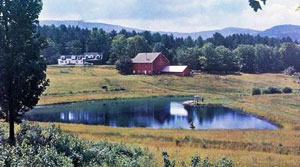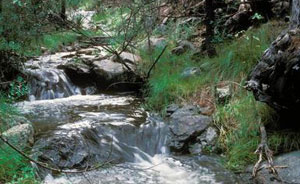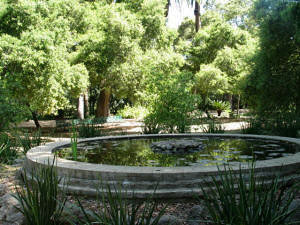Adapted from North Central Regional Extension Publication No. 241, Carole A. Lembi, Aquatic Weed Specialist, Purdue University and Aquatic Pest Control, University of California Leaflet 2961 and Aquatic Weed Management (SRAC Pub No 361 - 2013)
Specific requirements for commercial applicators in the Aquatic Pest Control category relate to a practical knowledge in four major areas:
 Water use situations
Water use situations
 Weed identification
Weed identification
 Weed management alternatives
Weed management alternatives
 Principles of limited area application.
Principles of limited area application.
Effective management of aquatic pests requires an integrated approach that incorporates cultural, mechanical, biological, and chemical methods as appropriate.
Why is Aquatic Weed Control Necessary?
Aquatic plants are those that grow partly or wholly in water; they may be rooted in the mud or floating freely. Plants are natural and important components of the aquatic environment. Microscopic plants (algae) form the base of the aquatic food chain. Larger algae and plants provide habitat for fish and food organisms, and all plants produce oxygen as they photosynthesize during the daylight hours. However, excessive growths of these plants can have a detrimental effect on a body of water and its inhabitants. Many shallow, nutrient-rich ponds, lakes, and drainage ditches provide ideal conditions for abundant aquatic plant growth. Effective management of aquatic plants requires an integrated approach that incorporates cultural, mechanical, biological, and chemical methods as appropriate.
Aquatic weeds:
- Interfere with or prohibit recreational activities such as swimming, fishing, and boating.
- Detract from the aesthetic appeal of a body of water.
- Stunt or interfere with a balanced fish population.
- Fish kills due to oxygen depletion from the water occur when plants die and decompose.
- Produce quiet water areas that are ideal for mosquito breeding.
- Certain algae can give water bad tastes and odors.
- Impede water flow in drainage ditches, irrigation canals, and culverts, causing water to back up.
- Deposition of weeds, sediment, and debris can cause bodies of water to fill in.
Water Use Situations
The demand for water resources for recreation, agriculture, and industry is increasing. Several species of aquatic plants are pests because they can interfere with water uses. When control is necessary, it must not harm people or the environment.
Habitats for aquatic weeds involve various proportions of water and soil, including intermittently wet ditches, ditches that always hold standing water, streams, stock ponds, farm ponds, lakes, ornamental ponds, and intermediate habitats. We will consider three types of water situations-static, limited flow impoundments, and moving water.
Static Water is totally confined or confined for much of the year within a known area. There is no downstream movement. However, even totally enclosed bodies of water often have appreciable water movement because of wind and changes in water temperature. Plants commonly grow in static water up to 12 feet deep and may grow in very clear water that is more than 20 feet deep. If a herbicide is applied, there is no reason to expect any appreciable downstream movement unless there is overflow from unusual conditions.
 John C. French Sr., Retired, Universities:Auburn, GA,
John C. French Sr., Retired, Universities:Auburn, GA,
Clemson and U of MO, Bugwood.org
Limited-flow Water Impoundments Ditches may be intermittently wet or dry, depending upon climatic conditions. Their purpose is to drain the surrounding land area so considerable amounts of water must pass through. Herbicides applied to these habitats may move downstream following an influx of water from surrounding areas.
Many farm ponds may have limited flow because there nearly always is an overflow pipe and an emergency overflow channel (spillway). An overflow pipe permits passage of a continuous and relatively well-defined amount of water at all times. An emergency spillway provides a release when storms dump excess amounts of water into a pond in a short time. Overflow or release water can carry small amounts of aquatic herbicides downstream from the application site. Sudden rainstorms that interrupt or come immediately after a pesticide application can move larger amounts downstream.
 Gerald Holmes, California Polytechnic State University
Gerald Holmes, California Polytechnic State University
at San Luis Obispo, Bugwood.org
Moving Water occurs in streams, creeks, streams, and rivers where there is always some detectable downstream current. Varying amounts of pesticides may move downstream from application sites. These situations present the greatest potential as environmental hazards.
[return]




